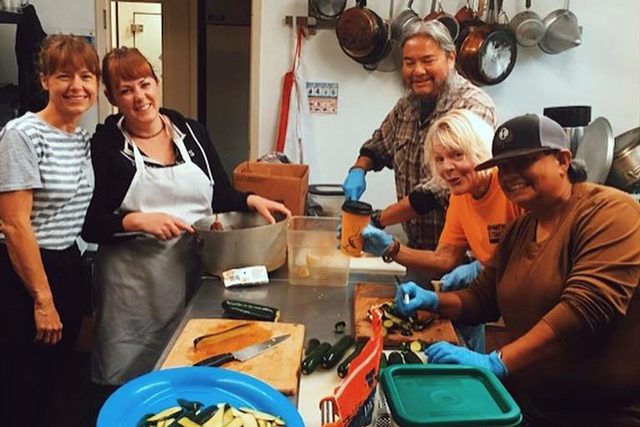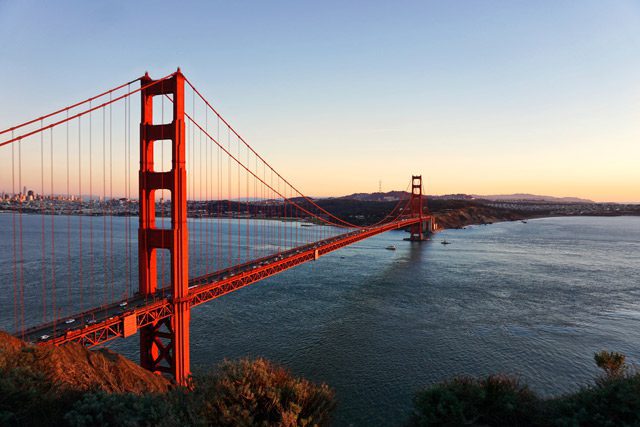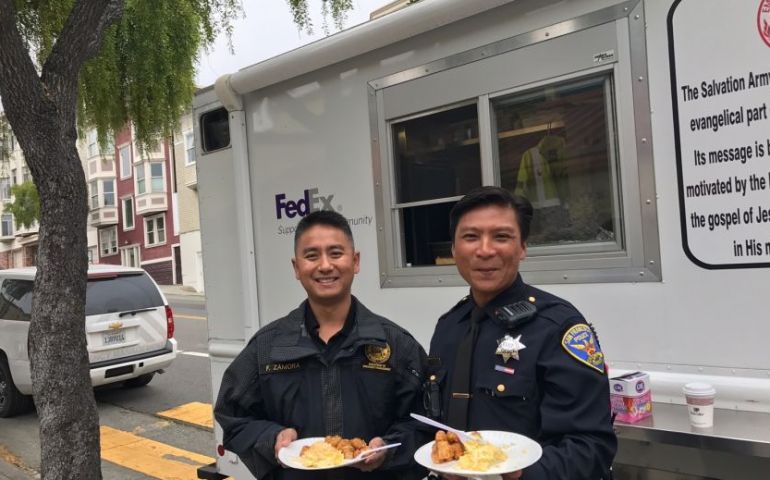Renaissance
 BY RICHARD LOVE, LT. COLONEL –
BY RICHARD LOVE, LT. COLONEL –
Divisional Commander, Golden State
A modified definition of “renaissance” is: “the activity, spirit or time of great revival…”.
By that definition, it is Renaissance–San Francisco!
Far from spinning into decline and negativity following the termination of contracts with the City of San Francisco in June, 1998, the spirit of the Army in San Francisco has been one of optimism, revitalization and new opportunities. It is a time of revival of the Army presence and service.
The former Senior Nutrition Meals Program has been reorganized as The Salvation Army Meals Program and, under the leadership of Mr. Mike Afshar, has added congregate meal sites. Some of these sites are ‘full-pay’ locations, which provide income that enables the serving of additional low-income senior sites within the city. Additionally, the Meals staff continues to expand their already busy catering department, serving delicious meals to a number of non-profit, as well as to several for-profit groups.
The Salvation Army social services have been totally reorganized. In June of 1998 TSA was able to purchase a warehouse building situated between Market Street and Mission St, between 5th and 6th Streets. This has become the Social Service Center, coordinating all of the Social Services in SF. The site also functions as the location for a new program, WOW which is the “Wee Ones Wonder Fair,” an event that incorporates some 20 plus agencies in San Francisco providing services to pre-school age children. Over 600 children received free clothing, free Dental clinic services and other supplies in the inaugural event held this year.
The Service Center is also the staging venue for the Campership Program, the Back to School event in August and, of course, the annual Christmas assistance program.
The Social Service Director for the City, Ms. Claire Dunmore, coordinates all of the daily social services conducted in the seven corps location around the City, as well as the weekly food distribution also served in these corps locations.
The Meals that Heal program, under the auspices of the Social Services, has expanded this year, providing free hot meals to home-bound seniors and continuing to provide not only the meal but a caring human contact with staff and volunteers.
The Harborlight Center, under Lieutenants Phil and Lawry Smith, is undergoing vigorous reorganization and redefinition of its much needed services. New staff have been added with additional openings to be filled.
The Turk Street Center is also in a time of transition. Majors Neil and Kathy Timpson, along with a proficient and dedicated staff, are expanding programs to meet the varied needs of a diverse population in the “Tenderloin” area of San Francisco. Particularly exciting is the emphasis on youth activities for the surprising number of young adults residing in this area.
The San Francisco Advisory Board, under the leadership of Lt. Colonel Bettie Love, city administrator, has been revitalized with new members and a new vision. The Board completed a strategic plan and is in the preliminary planning for a major Capital Campaign to address current and future needs. The board demonstrates their commitment not only with their time and advice, but with their internal giving – for the calendar year 2000 it was $1.25 million.
The Salvation Army invested more than $14.5 million in programs and activities in San Francisco during its last fiscal year. This is up nearly $1 million from the previous year.
During this time, the Army was able to touch the lives of a total of 75,336 children, women and men in this city.
These figures translate into real people with real needs which the Army attempts to deal with daily. Increasingly our programs reach out to children whose lives are impacted by poverty and substance abuse.
In a single year, nearly 600 San Francisco children attend summer camping programs. A total of 47,000 young people benefit from year-round programs. The Food Box program comes to the assistance of more than 9,000 families and holiday assistance helps over 12,000 individuals. Back-to-school clothing and supplies are distributed to 1,300 children, transitional housing helps over 1,500 individuals, and licensed childcare services are provided to their children. The Army’s residential recovery programs serve over 2,500. During the holidays an average of 5,500 seniors and disabled people receive meals delivered to their homes. Almost 11,000 volunteers invest 60,000 hours in support of Army programs.
The loss of the contract money that previously funded the Senior Nutrition Meals at 31 sites, part of the Haborlight Center as well as Emergency Housing at the Turk St. Center was a significant blow to TSA programs in San Francisco. We still have not fully recovered from that loss nor have we received donations to fully compensate for that loss. However, the positive impact has been the impetus to reorganize many of the Social Service programs so that the result today is a more visible and viable Salvation Army presence in the city.













